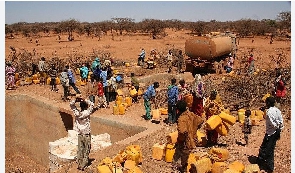 Eighty percent of African countries, populations moved toward rivers and into urban areas
Eighty percent of African countries, populations moved toward rivers and into urban areas
As regional climates undergo significant changes, and both droughts and floods become bigger problems prompting individuals to seek safer havens, more Africans are moving from one climate risky place to another, says a new study.
According to the research titled “Drought and human mobility in Africa” published in Earth’s Future on December 21, 2023, in 80 percent of African countries, populations moved toward rivers and into urban areas during or following drought, increasing the number of people living in flood-risk areas in recent decades.
This trend will likely intensify in coming decades as climate change is expected to make droughts more frequent and severe.
“It’s a cycle that exacerbates how many people are negatively impacted by drought, and not only in the ways we might normally expect,” said Serena Ceola, a hydrologist at the University of Bologna in Italy who led the study.
River-based migration
“As regional climates change and both droughts and floods become bigger problems, more people will struggle to find a safe place to settle. People may move from one drought-affected place to another or move somewhere that just poses different climate risks such as flooding.”
The Horn of Africa and southern Africa saw the most people move during droughts.
In Somalia, for example, more than 3.8 million people have been displaced in part by drought over the past three years. They then sought shelter near rivers, where farming could resume, but heavy rainfall and flash floods then displaced more than half a million people.
The study also examines changes in human settlement patterns associated with droughts on a continental scale.
About half to three-quarters of all studied countries had settlements move closer to rivers, and one-third to half of countries had urban populations grow during drought years.
The urban-growth signal could have been weaker than river-based migration because people may move to cities for many reasons, Ms Ceola said.